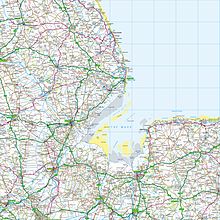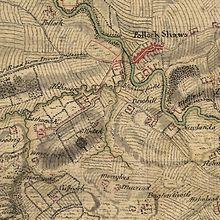| Welsh: Arolwg Ordnans | |
 | |
| Agency overview | |
|---|---|
| Formed | 1791 |
| Jurisdiction | Great Britain[Notes 1] |
| Headquarters | Southampton, England, UK 50°56′16″N 1°28′17″W / 50.9378°N 1.4713°W OS grid SU 373 155 |
| Employees | 1,244 |
| Minister responsible | |
| Agency executive |
|
| Parent agency | Department for Science, Innovation and Technology |
| Website | www |



The Ordnance Survey (OS) is the national mapping agency for Great Britain.[2] The agency's name indicates its original military purpose (see ordnance and surveying), which was to map Scotland in the wake of the Jacobite rising of 1745. There was also a more general and nationwide need in light of the potential threat of invasion during the Napoleonic Wars. Since 1 April 2015, the Ordnance Survey has operated as Ordnance Survey Ltd, a government-owned company, 100% in public ownership. The Ordnance Survey Board remains accountable to the Secretary of State for Science, Innovation and Technology. It was also a member of the Public Data Group.
Paper maps represent only 5% of the company's annual revenue. It produces digital map data, online route planning and sharing services and mobile apps, plus many other location-based products for business, government and consumers. Ordnance Survey mapping is usually classified as either "large-scale" (in other words, more detailed) or "small-scale". The Survey's large-scale mapping comprises 1:2,500 maps for urban areas and 1:10,000 more generally. (The latter superseded the 1:10,560 "six inches to the mile" scale in the 1950s.) These large scale maps are typically used in professional land-use contexts and were available as sheets until the 1980s, when they were digitised. Small-scale mapping for leisure use includes the 1:25,000 "Explorer" series, the 1:50,000 "Landranger" series and the 1:250,000 road maps. These are still available in traditional sheet form.
Ordnance Survey maps remain in copyright for 50 years after their publication. Some of the Copyright Libraries hold complete or near-complete collections of pre-digital OS mapping.
Cite error: There are <ref group=Notes> tags on this page, but the references will not show without a {{reflist|group=Notes}} template (see the help page).
- ^ "Side by side georeferenced maps viewer – Roy Lowlands 1752–55, One inch 7th series 1956–1961". National Library of Scotland. 16 March 2022. Archived from the original on 7 May 2022. Retrieved 7 May 2022.
- ^ Ordnance Survey, Government of the United Kingdom, archived from the original on 25 February 2017, retrieved 21 February 2017